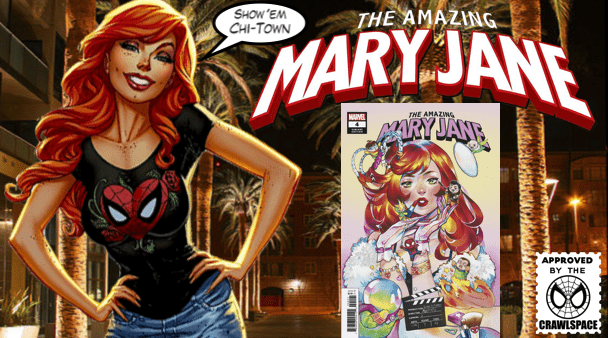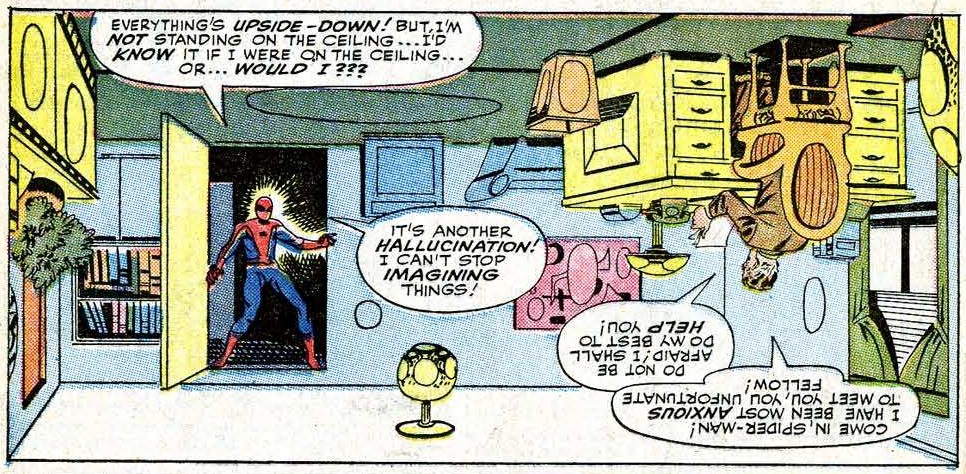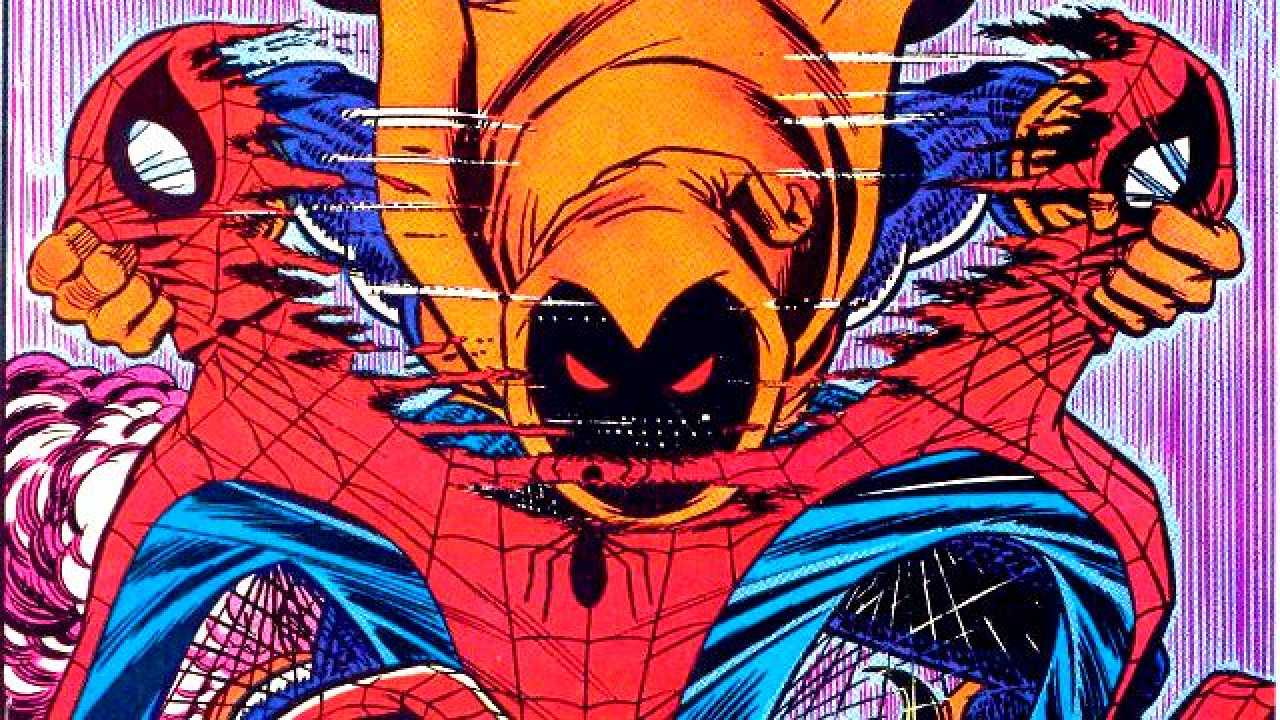The first 15 issues of of Spider-Man the Manga cover the run of writer Kōsei Ono and artist Ryoichi Ikegami. It’s three three issue storylines and one six issue storyline pitting a new version of Spider-Man against bad guys we’d recognize from the comics. Obviously, we’re going to start with the start with the story of how he gets his powers and defeats his first supervillain.
Spider-Man the Manga #1-3

The origin is a little bit different. There is no Uncle Ben. Yu Komori is a lonely high school student experimenting with radioactivity by himself when the spider bites. That specific element might be worth considering a future take on the origin. This is one of the first times we see in-depth the future Spider-Man’s discovery of his super-powers, and his responses to gaining his powers. Ono and Ikegami takes their time at it, but these are important scenes.
Electro is introduced calling himself the Electric Man, so this is a rare chance to tell Spidey’s story in a world where people aren’t familiar with superpowers. Komori has to help his attractive penpal Rumiko find her missing brother, and decides to go after Electro when there’s a potential $100,000 prize. Basic scenes are skipped (how does this aunt feel about someone else staying over? What was his social life like earlier?) Some scenes are not meant for the regular comic sized format. Two consecutive splash pages in a digest are quite different.

There is a decent origin here for Electro. I like the idea of a hoodlum who gets powers when experimented upon by a reluctant scientist. It’s a bit like Scorpion’s origin, but it goes in different places, including a big error by Electro.
The youtuber Zettaijapan summarized the first arc in the first seven minutes of a video covering the absurdity of the series.
A general comment about the series is that it’s okay as an example of genre. If you like older manga, with detailed locations and vehicles, cartoony characters and cinematic pacing, this is a well-made older manga series by a major artist. Ryoichi Ikegami is considered a master of the form.
The story seems a bit clumsy, and this is a problem with later stories as well. I’m not sure if it’s the source material, or the translation. Some lines are just silly.
There is a very different, reluctant take on Spider-Man here, but it does generally work. There’s a germ here for better material, with perhaps better translation/ commentary, but it’s not bad. The art is decent, and it’s interesting to see a reluctant superhero. Perhaps this is what happens to a Spider-Man without an Uncle Ben, who has a different defining tragedy.
B
Spider-Man the Manga #4-6

The second volume introduces the Lizard, and has the laziest supervillain origin I’ve ever seen in which a researcher in some weird places near the equator encounters reptiles, and experiences a Darwinian change. This is his impetus to go after a pharmaceutical company. Komori gets involved as he makes friends with someone whose dad works at the company, although he is personally traumatized by the aftermath of his fight with Electro (not a bad story engine.) It’s an interesting idea to have a superhero who is legitimately reluctant. There is an absurd coincidence involving one of the few people the socially awkward Yu knows, and this is a series with plenty of absurd coincidences as a reluctant hero with superpowers keeps stumbling into situations involving gangs or supervillains.
As a big Lizard fan, I should also note this is a lazy take on the Lizard. It gets to the problem of fighting a monster who is a good man underneath, but he doesn’t use his powers in clever ways, though I do like seeing how Ryoichi Ikegami illustrates him. The story is a step down. As a slight note, the translation ackshully confuses “you’re” for “your” in the fifth issue.
C-
Spider-Man the Manga #7-9
If you were involved in publishing comics in another country, and you had to pick an Amazing Spider-Man issue to adapt, you probably wouldn’t pick Amazing Spider-Man #81 with the debut of the Kangaroo and a city lockdown due to stolen bacteria. Japan chose differently. So the four major Spider-Man villains into the manga included Electro, the Lizard, Mysterio and Kangaroo. Because why use Doctor Octopus, or Green Goblin, or Kraven?

There is a funny opening when Spider-Man interferes in a fight, and realizes he picked the wrong side, that an outnumbered guy had started the fight. This version of Spider-Man has its own J. Jonah Jameson, with a similarly mustached newspaper publisher pissed off about how an earlier challenge went down.
Things take a dark turn when Yu’s friends are involved in a hit and run, and we get a sense of why Tokyo residents want to flee, and their desperation is not something we often see in the 616. Yu’s encounter fits the reluctant take on Spidey.
C+
Spider-Man the Manga #10-15
This may be the series at its most indulgent, taking a 22 page silver age story and turning into a 150+ page saga. However, there is some good.

If you’ve read Amazing Spider-Man #13—the first appearance of Mysterio—the plot is familiar, although it goes in some different directions. Yu Komori has quit being Spider-Man, and someone is going on a crime spree while wearing his costume. Komori briefly wonders if he’s going insane and somehow committing the crimes, but someone he cares about becomes the victim of a robbery. When a new superhero Mysterio arrives to challenge Spider-Man to a fight, Komori starts to realize that Mysterio is likely framing him. A kid is injured in the crossfire and Komori starts doing some dangerous things to get his hands on the money.
The visuals are decent. Ryoichi Ikegami is a future star manga artist, and he’s starting to show it. The story has a real sense of Komori as a teenager. He’s temperamental and doesn’t know what he’s doing. Sometimes he’ll hurt the people around him. There’s an aside that he may be living with his aunt because his parents were deadbeats who abandoned him.

I do like how they build up Mysterio’s arrival. It works to have several issues of Spider-Man seemingly committing a crime spree before Komori’s able to realize what’s going on. The crimes are clever- the type of stuff that would get media attention and destroy someone’s reputation.
B
Around this time, writer Kōsei Ono leaves, setting up a new take on the series for the remaining storylines. This is the last we’ve seen of the existing supervillains.








